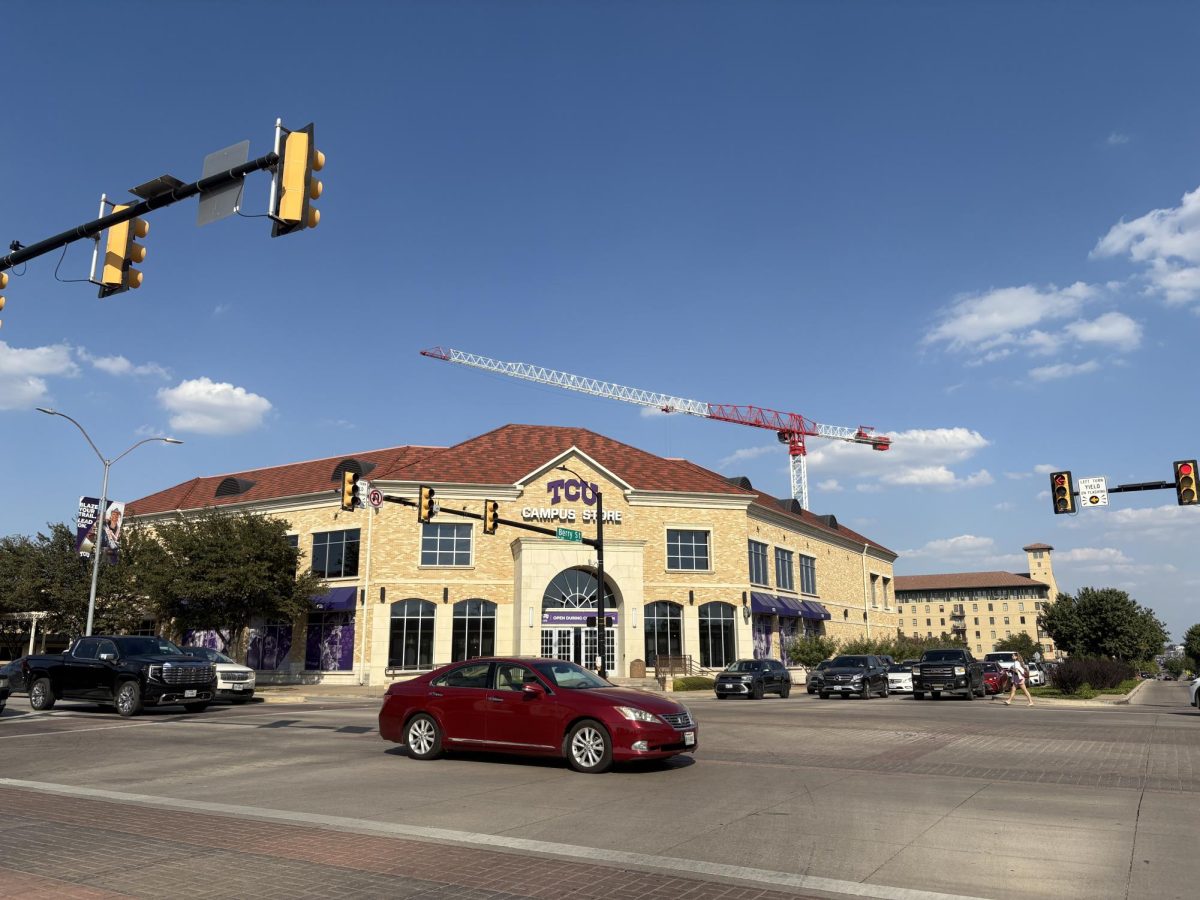Although construction around campus seems unending, there is nothing to be concerned about when breathing in the air.
Construction companies have specific rules and regulations mandated by the government to follow when renovating, demolishing, or even handling storm water.
When renovation or demolition occurs, workers have to take a survey to make sure there is no asbestos on-site. The survey includes an examination of the project building to determine what levels of asbestos are present.
Becky Johnson, professor of professional practice, has studied factors of asbestos and knows what procedures to take when examining the site.
“TCU is really very good about doing surveys, conducting surveys before they do any renovation demolition work,” Johnson said. “Once they find asbestos, almost all of it has to be removed before you can do your renovation or do any demolition on the project.”
Buildings that were built before 1980 may contain some form of asbestos product in insulation, pipes, floor textiles and other materials. Both the Amon G. Carter Stadium and Theodore Beasley Hall were built before 1970 and might have contained some of that material.
Asbestos is a mineral fiber used in a variety of building construction before the 1980s. Cutting, sanding, or remodeling buildings improperly can disturb the asbestos content. Improper exposure of asbestos can cause life-long health issues such as mesothelioma, lung cancer, and asbestosis.
Workers also try to preserve the environment and keep it safe and clean on and off campus.
Jeff Horn, Austin Commercial senior superintendent, said after the implosion of the Amon G. Carter Stadium in Dec. 2010, all of the material that came from the stadium was recycled.
There are six dumpsters on-site. As the project progresses workers separate trash to find things that can be recycled.
The black fences around the construction site are used to contain the debris from leaving site.
“On the perimeter of the structure we have debris netting that’s up along our perimeter handrail and our perimeter safety cable around the perimeter to keep anything that may be blown off the building,” Horn said.
It is challenging on game day to make the construction site an area that is safe to the public, he said. During the game, workers ensure there is no debris or dirt falling on fans.
As construction surrounds many people, workers have to provide safety prior to, during, and after construction.





